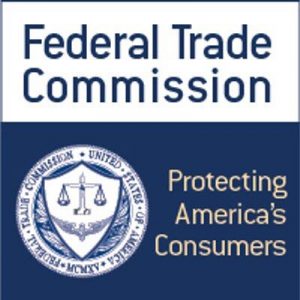
While the Federal Trade Commission’s (FTC) jewelry Guides are, like the name says, only guides, adhering to them is the best way to avoid possibly deceiving consumers, Robert Frisby, an attorney with the FTC’s Bureau of Consumer Protection, tells JCK.
“Hypothetically, there might be an advertisement that doesn’t exactly follow the FTC Guides that isn’t deceptive,” says Frisby, who notes he is speaking for himself, not his agency. “You could look at some of the Guide provisions as almost a safe harbor. You might not be deceiving people. But if you follow the Guides, you are on firmer ground.”
This week, the FTC sent letters to eight jewelry companies that sell lab-grown diamonds and diamond simulants. The FTC charged that the lab-grown companies’ online advertisements sometimes failed to clearly and conspicuously disclose that their diamonds were lab-created. They also used general environmental benefit claims, such as eco-friendly and sustainable, which are discouraged by the FTC’s Green Guides. The companies that sell simulants—diamond look-alikes such as cubic zirconia—were told not to describe their products in a way that could falsely imply that they are selling lab-grown or mined diamonds.
The companies were given 10 days to provide a plan to change their advertising. The FTC might take enforcement action if it finds companies in noncompliance with the Guides.
To some, this week FTC’s action indicated that it expected strict adherence to its guidelines. For instance, its sample letter alleges that a company, since identified as Diamond Foundry, has not been using descriptors such as laboratory-created in front of the word diamond, as the Guides recommend.
“The guidance that we include in the letters does indicate that the disclosure should come early in the advertisement,” says Frisby. “If the commission were to bring a case, we would have to show that a particular advertisement is deceptive. It’s possible that the word could come later in the ad, and that would still be sufficient.”
He says a lot depends on context.
“If you have a paragraph, and in the first sentence, it talks about the attribute of growth, that doesn’t necessarily mean that you have to use the [descriptive word] for the rest of the paragraph. It comes down to the net impression of the advertisement.”
Still, he stresses that any disclosure of a diamond’s lab-grown origin must be “clear and conspicuous.” The FTC notes that some companies have extensive pages of information about their product, but not all consumers read those pages. Which is why disclosure should be part of all communications, particularly on social media, the commission said.
The FTC has generally recommended that marketers use three terms to describe diamonds that didn’t originated from a mine: laboratory-grown, laboratory-created, and [company]-created. It has also okayed the term cultured, but only in conjunction with other disclosures.
Frisby says other descriptive phrases might work, too.
“Nothing here requires companies to use any particular terminology,” he says. ”Companies have to be clear and conspicuous about what [the diamonds] are. There may be another way of making an adequate disclosure.”
He recommends that if companies want to try alternate terms, they conduct market research to see if consumers understand those terms.
Regarding environmental claims, Frisby notes that the FTC has extensive guidance on how to properly make them. Its Green Guides discourage general environmental benefit claims such as eco-friendly.
“The concern about general environmental benefit claims is that they are susceptible to all sorts of interpretations,” he says. “It is rare that a product can have an environmental benefit in all the ways that consumers might take away from a general claim.”
Instead, he says marketers need to spell out the product’s specific environmental benefits.
“If something is recyclable or has recycled content, those are much more specific claims,” he says. “People would understand what you’re getting at. A general claim that a product is eco-friendly could mean many different things.”
Frisby declined comment on whether the FTC would look at other jewelry companies, or what further actions it might take. But he says the FTC staff had sufficient reason to believe that the eight companies were running ads that might deceive consumers.
“We have asked the companies to respond to the letter, and we will be looking at what they come back with,” he says.
If the FTC did bring an enforcement action, the agency would bear the burden of proving that the advertisement was deceptive, he adds.
As for what companies should keep in mind when marketing, Frisby says they should always remember that “they are responsible for the reasonable interpretation of their advertising.”
Further analysis can be seen in a blog post from yesterday.
(Image courtesy of the Federal Trade Commission)
Follow JCK on Instagram: @jckmagazineFollow JCK on Twitter: @jckmagazine
Follow JCK on Facebook: @jckmagazine